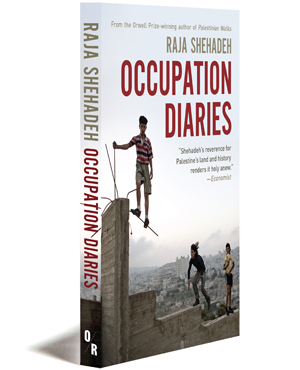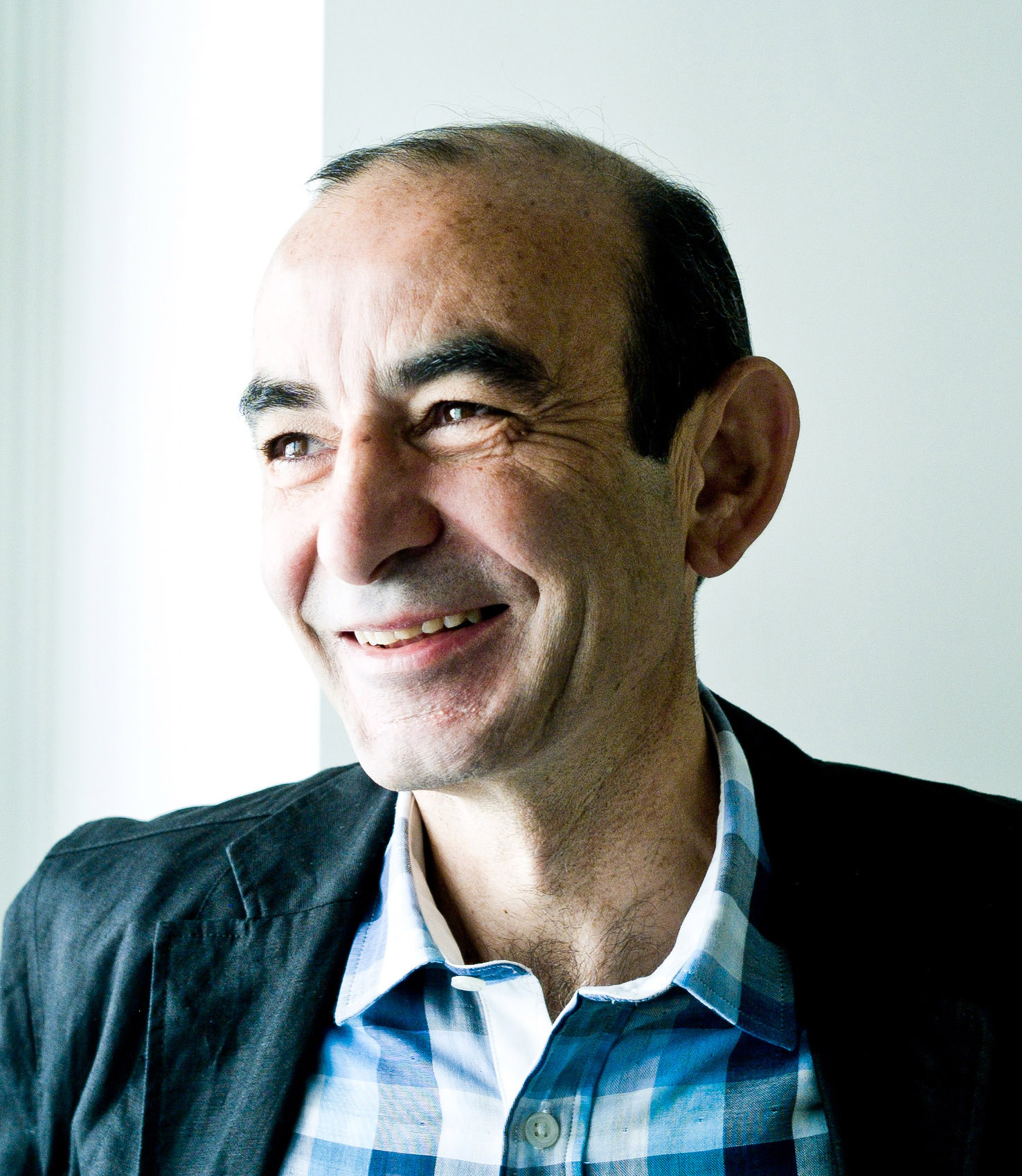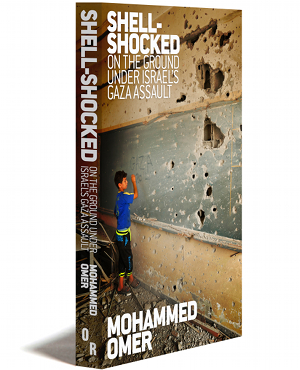
Occupation Diaries
"Few Palestinians have opened their minds and their hearts with such frankness." —The New York Times
"At once gentle and angry, resolute and realistic." —The Nation
"Towards any proper understanding of history there are many small paths. I strongly suggest you walk with him." —John Berger on Palestinian Walks
TweetBuy This Book
|
Paperback: $18
|
E-book: $10
|
Print + E-book: $23
|
Available exclusively in North America
About the Book
It is often the smallest details of daily life that tell us the most. And so it is under occupation in Palestine. What most of us take for granted has to be carefully thought about and planned for: When will the post be allowed to get through? Will there be enough water for the bath tonight? How shall I get rid of the rubbish collecting outside? How much time should I allow for the journey to visit my cousin, going through checkpoints? And big questions too: Is working with left-wing Israelis collaborating or not? What effect will the Arab Spring have on the future of Palestine? What can anyone do to bring about change? Are any of life’s pleasures untouched by politics?
Publication September 2012 • 212 pages
Paperback ISBN 978-1-935928-97-3 • E-book ISBN 978-1-935928-98-0
About the Author
 |
Raja Shehadeh is the author of A Rift in Time, When the Bulbul Stopped Singing, Strangers in the House, described by the Economist as “distinctive and truly impressive,” and Palestinian Walks, for which he won the 2008 Orwell Prize. Shehadeh trained as a barrister in London and is a founder of the human rights organization Al-Haq. He blogs regularly for the International Herald Tribune/New York Times and lives in Ramallah, on the West Bank. |
In the Media
Orwell Prize, April 19th 2013
Orwell Prize, March 29th 2013
Los Angeles Review of Books, October 28th 2012
Read an Excerpt
4 January 2010
My wife, Penny, and I went today to Bethlehem to look at the work of Banksy, the British street artist, on the Annexation Wall there. This conflict and the methods Israel uses to repress Palestinians are producing responses in many parts of the world. Banksy is one artist – but not the only one – who has come to express his feelings about the situation using the wall as his canvas.
We took the Walajeh road heading south-west on a circular route to Bethlehem, which is directly south of Jerusalem, in order to avoid the checkpoint between the two cities. Once Hani had shown me the way I could drive by myself. We were stopped at the Walajeh checkpoint, which I had heard also checks whether those crossing it have paid their taxes to Israel, just to make life more complicated. But there was no big delay. The road meandered through beautiful hills overlooking forested valleys with ancient villages spread all around. One of these, Battir, which lies further east, is famous for its aubergines and has some of the earliest examples of terraced agriculture. The planned route of the Annexation Wall will destroy these fields that have been cultivated for many centuries. So extensive would be the loss that in a rare case of coordinated action Israelis and Palestinians are working together to prevent the wall from being built there. Close by stood the village of New Walajeh, which was built following the Nakba – the Palestinian Catastrophe – of 1948 by the inhabitants of the original village on the hill opposite after they were forced out. Now the Israeli authorities are claiming the houses were built without a permit and have issued demolition orders. If they carry out their threats very few houses would remain and the nearby settlement will spread and swallow the village land, completing the isolation of Jerusalem on the south-eastern side from the nearby Palestinian towns and villages.
As we drove along the narrow winding road and listened to music, Penny and I reviewed the last decade. We found it full of wars. We counted five that had taken place in our immediate region (which does not include Afghanistan), each more brutal than the last. The Second Intifada was the first, followed by the Israeli invasion of West Bank cities, then the Iraq war, the second Lebanonese war and the war on the Gaza Strip. In the beginning I had refused to acknowledge the Intifada that was raging around me and concentrated instead on my writing. I now realize that this established a pattern for me. With every war a new book. Five wars, five books.
From the top of the hill we looked down at the violated valley and saw a beautiful band of blue haze. The sun was illuminating the mist formed by the moisture-laden air that had settled in the valley. It was not like the ordinary haze that can sometimes be seen veiling our hills. It had density, substance and the opaqueness of the purest pervasive blue, like a shroud that had descended from the heavens into the valley and spread along its entire length, linking the two sides, Arab and Jewish, so often divided by walls of steel and concrete but also of hatred and lies.
Up the hill we found the so-called dCO [district Coordination Office] checkpoint abandoned and drove through. There is no wall here.
From the heights of Beit Jala, where we entered, we could see the road to the Gush Etzion settlement ‘bloc’ around Hebron, with the tunnel piercing the hill on which we stood. The ancient city of Beit Jala, attractive and tidy with many of its old buildings preserved, has been violently penetrated. Fortunately, it has not been spoiled by high-rise blocks, as happened in Ramallah. We crossed the town, drove into Bethlehem and joined the main road that used to connect the city of Christ’s nativity with Jerusalem. Had it not been for the checkpoint, this would have been the road we took to Jerusalem.
As we approached the wall that bisects the road we saw the first of Banksy’s works, a young girl frisking an Israeli soldier, his gun laid on the side. Effective, I thought. Then we came upon one with a dotted line and scissors, as though the wall were made of cardboard and was doomed eventually to be cut through. Next, to one side, was a mouse with a slingshot, painted on a small concrete slab that used to be part of a barrier but was now abandoned at the edge of the road. We parked the car and walked along the wall. I tried hard to figure out its course and what lies on the other side, but this was not easy because of the twists and turns.
No longer the thriving city I used to know, Bethlehem was now a punished city cut off from East Jerusalem and the rest of the West Bank, its lifeline, and thrown to the dogs. There was the sense that the inhabitants had been chased out and banished, the gate closed behind them and the key thrown in the gutter.
We saw taxis waiting on the Bethlehem side, where the wall divides the highway that once used to be such a busy road. They were desperate for work and were disappointed that we didn’t need a car. To their right were two long pedestrian passageways bordered by metal grilles, one for entering and the other for exiting Jerusalem. In the morning they would be busy with those Palestinians fortunate enough to have permits to work in Israel. There was no one using them now. As I walked away I recalled a documentary I had seen about this checkpoint that featured an Israeli violinist who would come every morning at daybreak, take his old violin out of its case and play it to cheer the labourers, penned in and herded like cattle, as they waited to be allowed into Israel to earn their meagre livings. It was not clear what the workers made of this old man as their sleepy eyes stared blankly through the grille. He never spoke; he just played his instrument with a pained expression on his face.
We walked along the wall, which was covered with graffiti expressing horror, the transience of this monstrosity and rage against the Israelis for putting it up. In one of the wall’s loops we met a woman with tightly combed-back hair and a purposeful, intelligent look. She was walking away from her house, taking the mandatory detour to town. I asked her what was behind this part of the wall, hazarding a guess that Rachel’s Tomb would be there.
‘No, it’s not,’ she said. ‘This is the car park.’
So they made the loop around only to provide space for a car park for Jewish worshippers.
‘This is our house over there,’ she then told me. It was in a bay surrounded on three sides by the wall. ‘We had four shops by the road which are now closed.’
‘Did you consider suing?’ I asked.
‘We did, but they would not listen to us. We appointed a lawyer, but there was no way. No one cares for us. We lost our business. Our children are not developing normally. Imagine waking every day to see the wall before you. They have lost their happy childhood. Their growth is stunted. But no one cares, no one thinks of us. This is how it is. Our lives are destroyed.’
I walked towards her house. She had a ‘Merry Christmas’ sign and a wreath over the door, lonely greetings that no passer-by would read or see. Their house had always stood on the busy main street, where tourists would stop and buy from the shops below their flat. Now, like the rest of the city, it was banished, isolated, penalised, tucked away in a small enclosure surrounded on three sides by an immense concrete wall, alone and desolate. But who was responsible for planning the course of the wall, I wondered? Surely it must have been tremendously more costly to make the wall loop in this fashion rather than run in a straight line. Surely the cement manufacturers, steel importers, construction companies vying for lucrative contracts and those eager to lay their hands on Palestinian land sequestered on the Israeli side must have exerted their influence. No wonder Israelis are not allowed to visit this side of the wall. How ashamed they would be if they saw what was being done to their neighbours in their name. There can be no justification, on security or any other pretext, for such a wall.
The real reason for this wall is to sever Bethlehem from Jerusalem. Israel is remapping the whole area, extending into the heart of the West Bank so as to encircle West Jerusalem with a thick chain of Jewish settlements and isolate the city from the Arab towns of Bethlehem to the south and Ramallah to the north. This is quite clear to me.
In an empty clearing created by the wall north of where the woman’s house stood an artist had placed an installation in the form of a catapult. We went up to look at it and two boys no older than thirteen joined us. They were taking a cigarette break from their work of selling postcards to the non-existent tourists. ‘We are in the tourist business,’ they told us when we enquired what they did. They had obviously come here to smoke without being detected. Before the wall was built this was prime land that could be seen from the highway; now it is an enclosed area where youngsters come for a smoke out of sight of their elders. What desolation has been wrought on the entrance to this ancient city!
We left this dismal scene and continued our tour of the wall. Next to the house was the message ‘I want my ball back’ and below it, ‘Thank you’. If the children who live here should lose their ball behind the wall they would have no way of retrieving it.
When we emerged from this miserable labyrinth of concrete we were accosted by a desperate man selling rosaries who pestered me to buy from him. Other shop-keepers met us with the complaint, ‘Where are the tourists you brought?’ Like everywhere else, those in the tourist business cannot help seeing every visitor as a potential purchaser and nothing else. It was all most trying.
From the restaurant where we had lunch we could see the flourishing summit of Jabal Abu Gniem, which Israelis call Har Homa. Already developed, this is another piece of the Israeli construction plan to encircle East Jerusalem with more Jewish settlements.
A film-maker had taught residents of the Aida refugee camp in Bethlehem video-mapping techniques and had asked them to represent various aspects of camp life showing how their space and their surroundings had changed over time. One of the subjects was a mother whose daughter had a hereditary disease that required weekly infusions at the Palestinian Al-Maqased Hospital in East Jerusalem. She mapped out the various routes she and her sick daughter had to take to get to the hospital and how much more complicated the wall had made their journey. As the lines projected on to the screen became increasingly entangled and we saw how complicated the Israelis had rendered our lives, I became more and more convinced that we were living next to a mad people.






